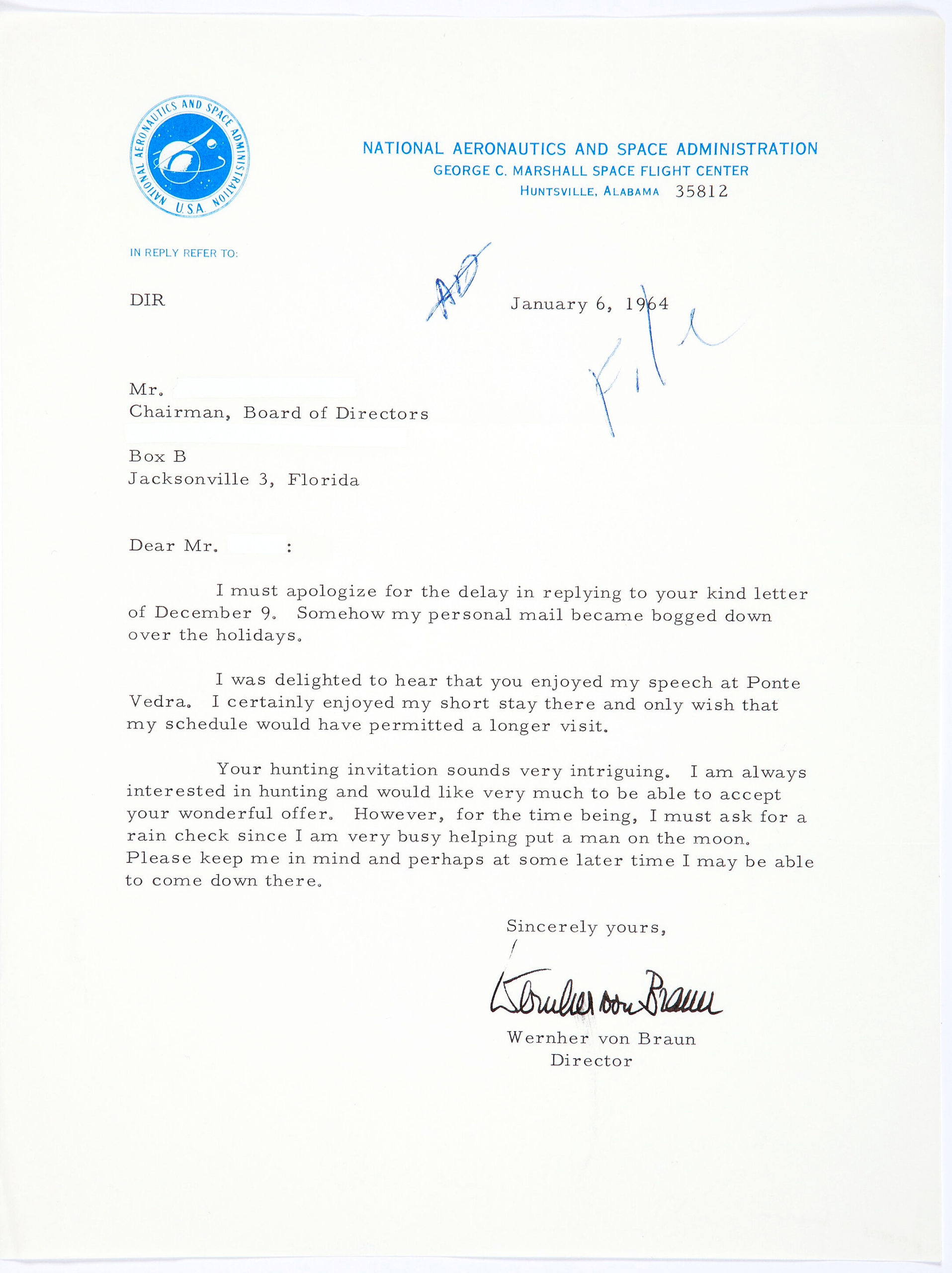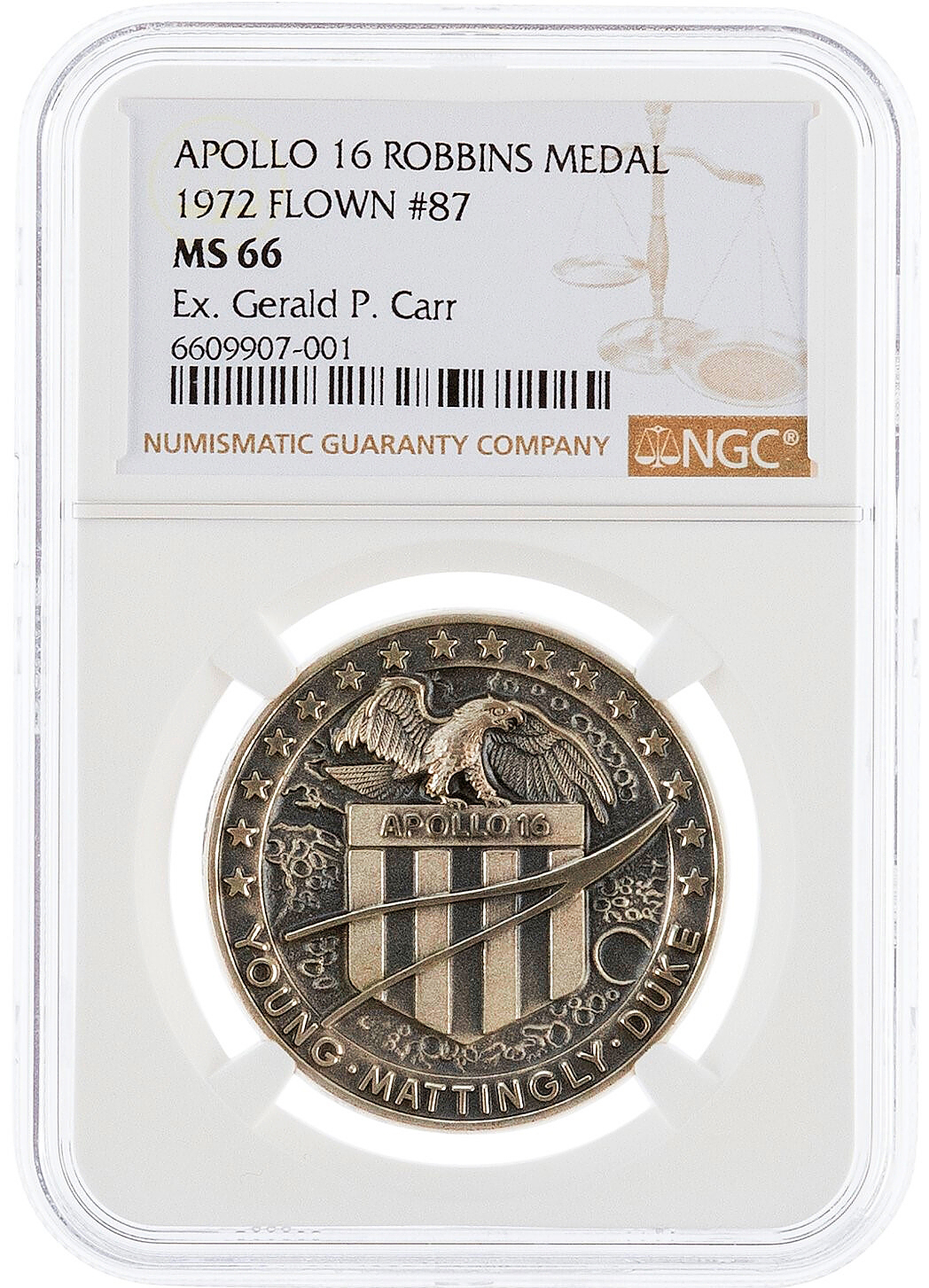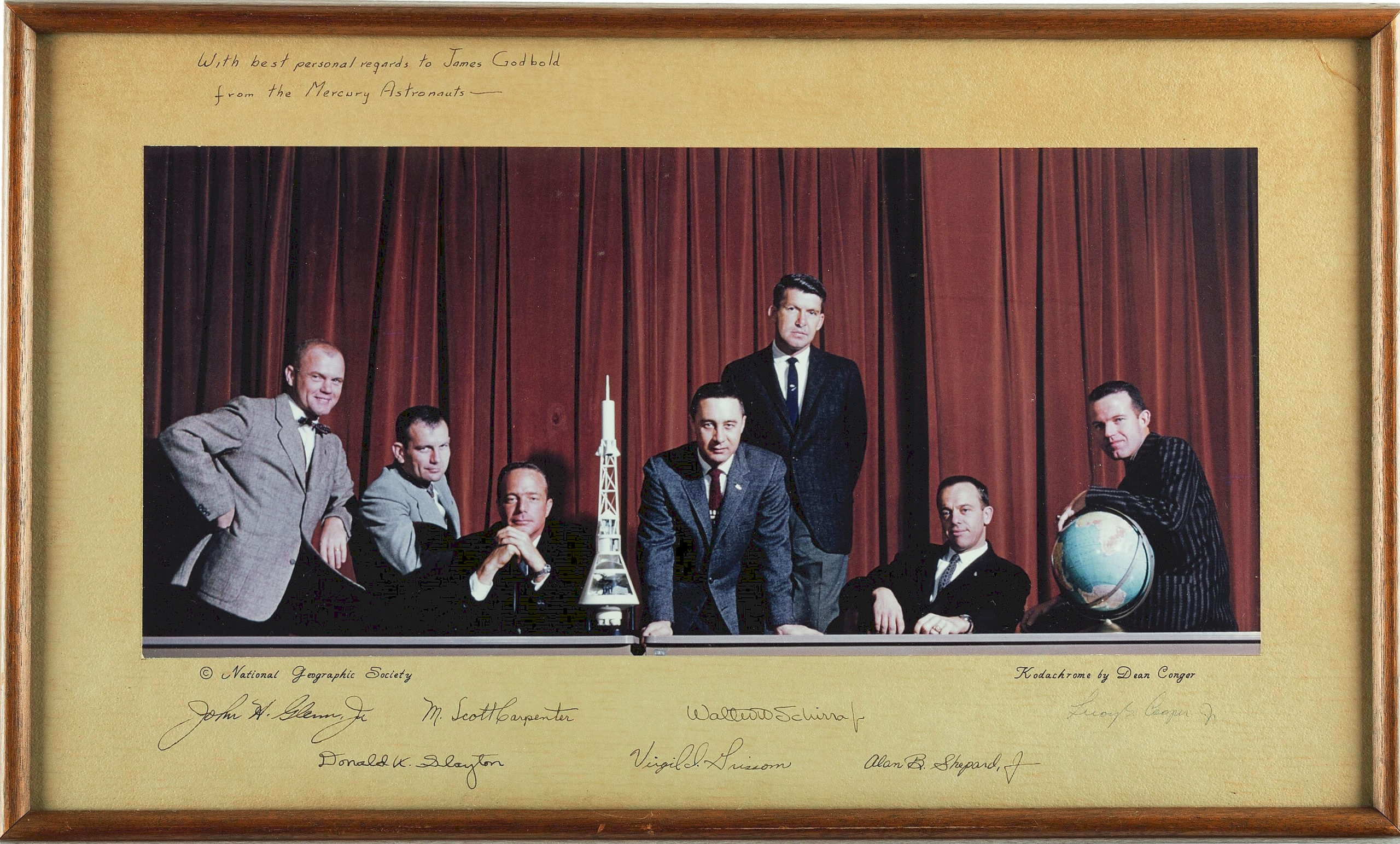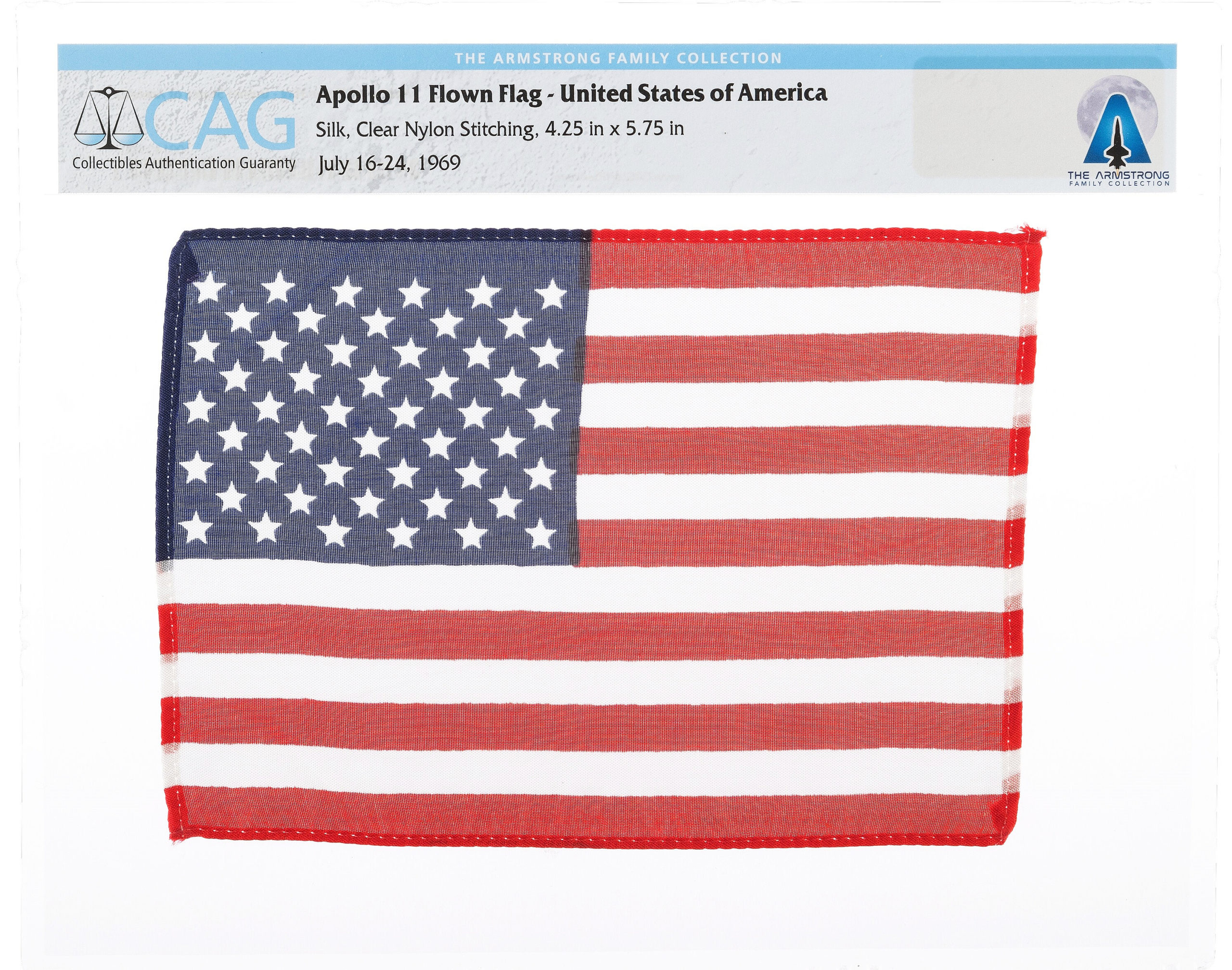
Directly from the Armstrong Family Collection, this Apollo 11 flown American flag was the highest-flying lot of the auction at $62,500.
Review by Z.G. Burnett; Images Courtesy of Heritage Auctions
DALLAS — On May 19 and 20, almost 1,000 lots from the Armstrong Family Collection were offered at Heritage Auctions’ Space Exploration Signature Auction. Many of these were artifacts of scientific history and many had direct connections with the Apollo missions and their pilots. Excluding post-sale purchases, the auction totaled $1,553,925.
Leading the sale was an Apollo 11-flown American flag which sold for $62,500. “Flags that were flown on any mission always generate major interest, but that just scratches the surface for this flag,” says Brad Palmer, Heritage’s director of space exploration. “This one is exceptionally important because it was flown on Apollo 11, which included the first lunar landing, and came directly from the collection of Neil Armstrong, who of course was the first man to set foot on the moon. As far as desirability, it absolutely checks every box.” Three other space-flown flags, two from the Apollo 16 mission and one from Apollo 17, followed this in price at $15,000, $14,375 and $13,750.
Two lunar module spacecraft flown identification plates occupied second and first place in the auction. An Apollo 9 identification plate display, originally from the personal collection of mission commander James McDivitt and with his signed certificate of authenticity drew a winning bid of $37,500. Apollo 9 was the first flight of the command and service module, and included the first manned lunar module. Next, a mounted Apollo 17 identification plate reached $33,750, and was only the second of its kind ever offered at auction.
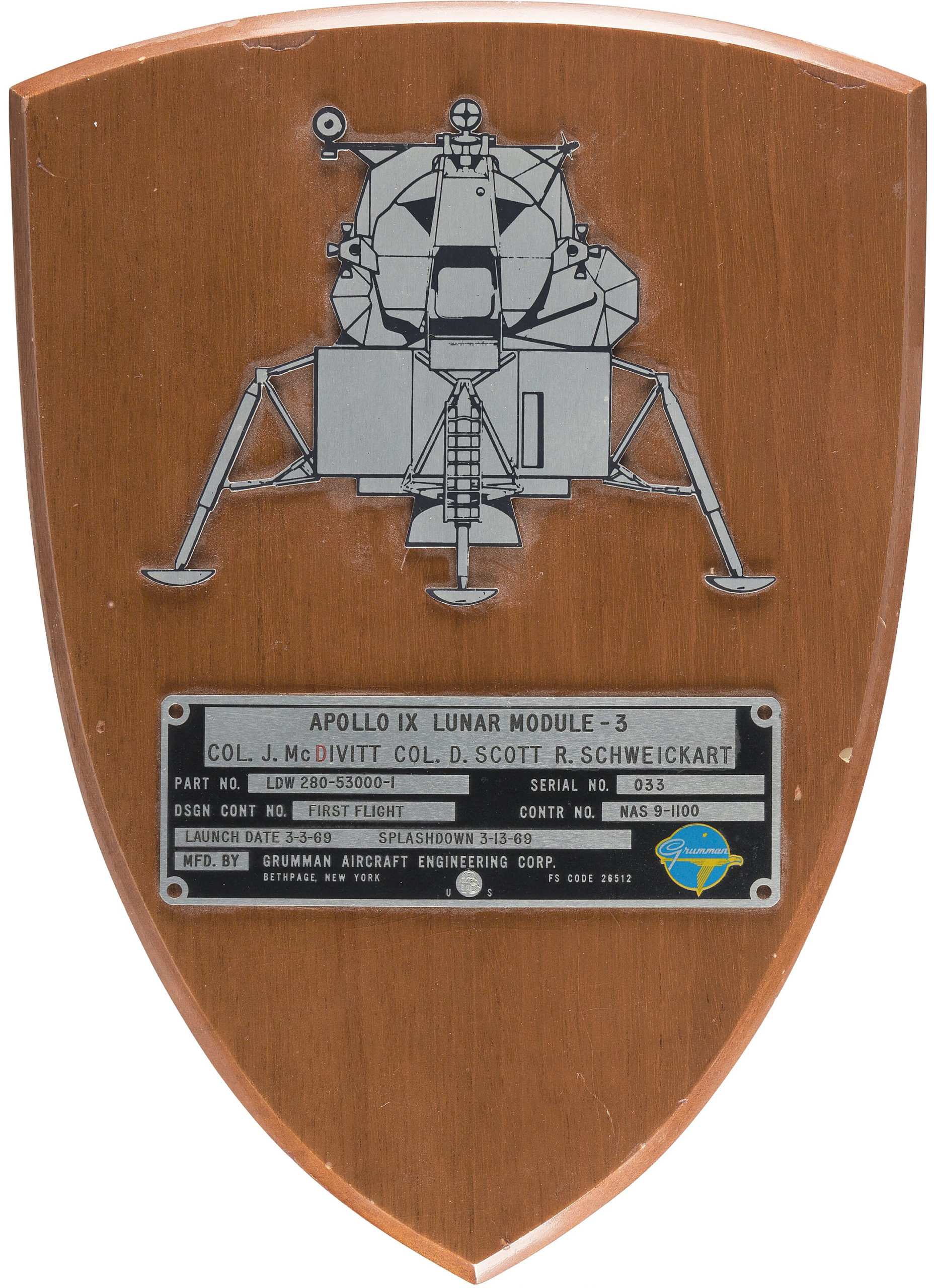
Mounted flown identification plate from the Apollo 9 mission, which included the first manned lunar module, sold second in the auction at $37,500.
One lot that surged well beyond pre-auction expectations was an Apollo 16 lunar surface flown EVA II walking traverse map in a custom wall display, which drew 14 bids before landing in a new collection at $30,000. The map is another of 30 lots from the Duke collection, who served as CAPCOM — acting as communications liaison between NASA and the astronauts above — for the Apollo 11 mission, and then was among the moonwalkers aboard Apollo 16. This map was used by Duke and John Young as they explored the Descartes Highlands upon the lunar rover. These maps were developed in case the Rover failed and the crew had to find their way back to the rover on foot.
Letters were popular with bidders, especially a 1964 reply from Werhner von Braun, sometimes known as “father of the American lunar program;” this is an ironic designation in light of his active membership in the Nazi party and past rank of Sturmbannführer, which was equivalent to a major in the SS during World War II. Von Braun developed the V-2 rocket in 1944, and was absorbed into the American space program following the war in Operation Paperclip, an intelligence program that employed more than 1,600 scientists and engineers from Nazi Germany in the US government. He developed Saturn rockets for the Apollo program, and during this time Von Braun sent this letter in reply to an invitation from an unnamed Jacksonville, Fla., chairman. The brief response offers his excuses, adding “for the time being, I must ask for a rain check since I am very busy helping put a man on the moon.” The letter was bid to $27,500. Another lot containing more than 170 covers and letters relating to the development of the V-1 and V-2 rockets, many of them handwritten, sold for $18,750.
Prices quoted with buyer’s premium as reported by the auction house. For additional information, 214-528-3500 or www.ha.com.






